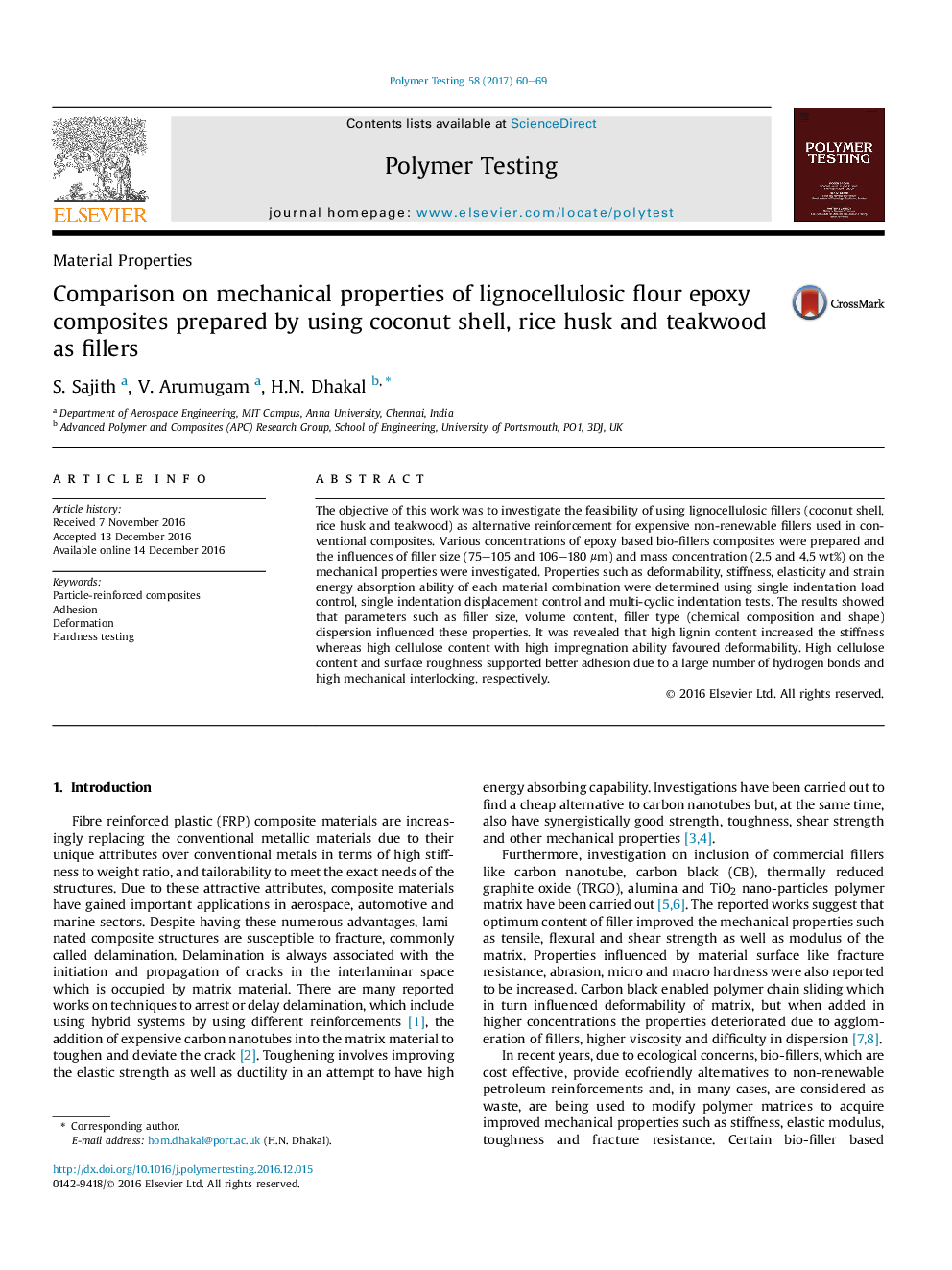| Article ID | Journal | Published Year | Pages | File Type |
|---|---|---|---|---|
| 5205670 | Polymer Testing | 2017 | 10 Pages |
The objective of this work was to investigate the feasibility of using lignocellulosic fillers (coconut shell, rice husk and teakwood) as alternative reinforcement for expensive non-renewable fillers used in conventional composites. Various concentrations of epoxy based bio-fillers composites were prepared and the influences of filler size (75-105 and 106-180 μm) and mass concentration (2.5 and 4.5 wt%) on the mechanical properties were investigated. Properties such as deformability, stiffness, elasticity and strain energy absorption ability of each material combination were determined using single indentation load control, single indentation displacement control and multi-cyclic indentation tests. The results showed that parameters such as filler size, volume content, filler type (chemical composition and shape) dispersion influenced these properties. It was revealed that high lignin content increased the stiffness whereas high cellulose content with high impregnation ability favoured deformability. High cellulose content and surface roughness supported better adhesion due to a large number of hydrogen bonds and high mechanical interlocking, respectively.
